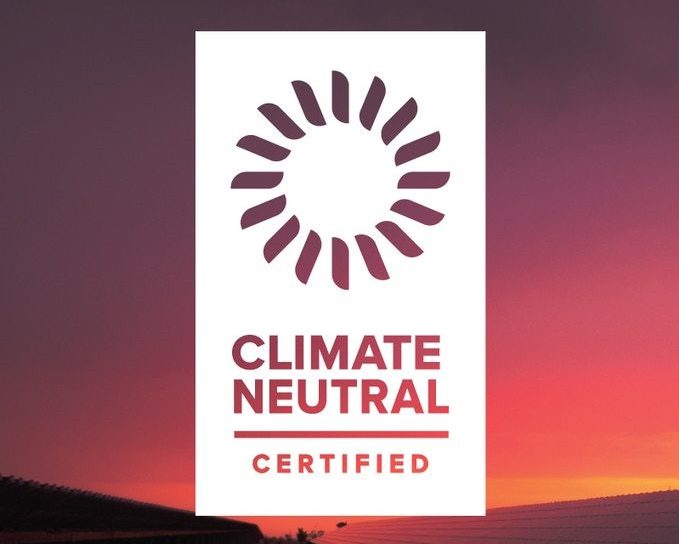It’s no secret that consumers want to support brands that are working to reduce their carbon emissions. But for many companies, getting them on board starts with figuring out just how dirty their existing footprint is. Although many news reports discuss corporate sustainability initiatives or the emissions attributable to a particular brand, less information seems available about the methods and practices that go into calculating those figures.
“We launched a certification for brands called Climate Neutral Certified in June 2019, and we knew that we would have to somehow create carbon footprints for a number of companies. We looked around to see what companies tend to do and how they approach it,” Austin Whitman, CEO of Climate Neutral, tells AFN.
“The answer is that people either fill out the Quantis Scope 3 Evaluator, which is a tool built 10 years ago, or they hire a consultant who uses the Quantis Scope 3 evaluator and puts their window dressing on it. This exercise costs way too much money for us.”
A brand wanting to measure its carbon footprint may pay as much as $40,000 to outside consulting firms. The measurement tools that consultants use often fail to account for scope 3 emissions, which include all emissions embedded in the supply chain from production to the point of purchase. This can comprise the most significant percentage of total emissions for companies making consumer products, according to Climate Neutral.
Climate Neutral is a 501(c)(3) nonprofit hoping to decarbonize the world through its net-zero certification. With its new software-based measurement tool, the Brand Emissions Estimator (BEE), Climate Neutral claims it can calculate the approximate carbon footprint of a company.
Getting more businesses to go through a carbon footprinting exercise is an essential step in addressing climate change, says Boston-based Whitman. Brands who are interested in using the tool without obtaining the certification can pay a flat rate licensing fee of $1,000 to access it.
So far, the startup has used the BEE to certify an inaugural class of 124 companies that have earned the Climate Neutral stamp to fully measure, offset, and enact plans to reduce carbon emissions from 2019’s levels.
“Only a few companies will pay a consultant. The rest will do nothing,” Whitman says.
“This is the reason we have a climate change problem. There are too many people doing nothing about it.”
The high dollar figure attached to a carbon accounting consultant is associated with the time and people power that goes into mapping emissions for a company generating $50 million to $100 million in revenue, Whitman surmises.
The carbon accounting world also comes with a fair amount of variety. Accountants either use Quantis or some other methodology for assessing a brand’s carbon emissions. This can become deeply subjective when it comes to deciding which supply chain points to include and which to omit. Whitman is familiar with at least a dozen international standards used to perform carbon counting analyses.
“The variability tends to be in what people choose to count. You could send one company through two different footprinting exercises, and depending on what someone considered to be relevant or not, there may be some significant differences,” he says.
One example is whether an accountant includes emissions associated with business travel for a company’s employees. If a brand has thousands of workers who are regularly on the move, this figure could add up quickly – and its omission or inclusion could make a significant difference in the total emissions figure.
The BEE is based around the World Resources Institute and World Business Council for Sustainable Development-backed Greenhouse Gas Protocol. It aims to count virtually all of the possible categories and sources of emissions.
Whitman is also keenly aware of the opportunities that lie in assessing emissions in the agriculture space.
“The tie in to the ag space is an interesting one. We have talked to a few folks who are on the cutting edge of regenerative ag, and we have ag-based offsets as one of the recognized classes in the offsets standard,” he explains.
Carbon credit markets have become an increasingly popular topic, particularly with regards to monetizing carbon that farmers using regenerative practices may be able to store in their soils. Cargill has started paying Iowa farmers for carbon sequestration and water quality efforts in partnership with the Iowa Soybean Association, for example.
In addition to providing offsets, carbon credit marketplaces may generate additional income for farmers on top of their crops and livestock. Whether accounting methodologies are reliable enough to assess carbon drawdown to support a carbon credit market has been subject to some debate, however.
“We have not built very advanced emissions factors for different types of ag because that area is really just emerging,” Whitman says.
“If someone has three tonnes of wheat grown in three different places, we probably aren’t going to capture […] much of a difference in carbon based on whether one was produced with traditional farming practices versus regenerative practices. That is something we would love to do and that we are keeping an eye on.”




